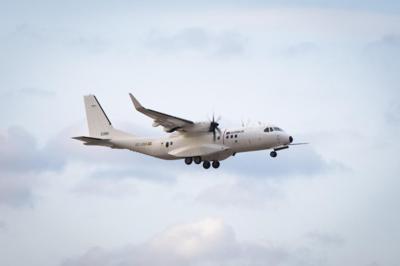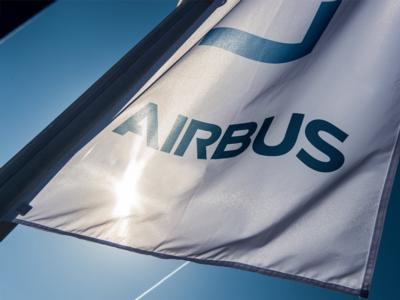Fri, Jan 28, 2022
Manufacturer Tests Morphing Wing, Digital Controls, And Flat Antenna Under Green Initiative for Regional Commuters
Airbus completed the first test flight of its regional commuter, demonstration aircraft for the Clean Sky 2 program.

The company sent its C295, currently named “Flight Test Bed 2”, off from its final assembly point in Seville, Spain. With its maiden voyage out of the way, the C295 now begins evaluating its prototype features for future designs that could make them more environmentally friendly.
The Airbus C295 is a part of both the pan-European Clean Sky 2 and the EU Horizon 2020 research and innovation programs. Each of them, among other efforts around the world, hopes to increase efficiency and decrease harmful emissions of aircraft by using a slate of fresh technologies, refinements, and materials. The C295 tests some relatively affordable, production-ready features like a semi-morphing wing, a digital flight control system, and a low-profile satellite communications antenna. So far, it's expected that a standard, regional, multimission aircraft could see up to 43% CO2 and 70% NOx reductions can be achieved in a typical Search and Rescue mission of 400 nautical miles, as well as 45% less noise during take-off.

The aerodynamic design uses an evolution of dynamic winglets on the morphing wing. Similarly tailored, revised flight controls see improvements to all primary control surfaces for better, more efficient flight. Inside the aircraft, the flight control system has been digitized for electronic command and adjustment in-flight. Throughout the build process, the C295 has been built with updated materials, including liberal use of 3d-printed scalmalloy parts to simplify design and create pieces that would be impossible to manufacture through traditional means.
“The first flight of the C295 FTB2 is a key milestone that represents an important step forward in the program, following the successful integration of the new aero structures, power-on and ground tests. A few years ago this program was just a dream of a more sustainable future for aviation. Today we are at the final stage and we finally made it fly” said Francisco Javier Sánchez Segura, executive vice president engineering Airbus defence and space.
More News
From 2023 (YouTube Edition): "Ain’t Your Daddy’s Super Cub”—Don Wade Co-owned by Don and Ron Wade—the former of Don’s Dream Machines, a storied >[...]
Pilot-Rated Passenger Reported That The Pilot Did Not Adequately “Round Out” The Landing Flare And The Airplane Bounced And Yawed To The Right Analysis: The pilot state>[...]
Dead Reckoning Dead reckoning, as applied to flying, is the navigation of an airplane solely by means of computations based on airspeed, course, heading, wind direction, and speed,>[...]
Aero Linx: Lake Amphibian Club This website is created and sponsored by the Lake Amphibian Club, to help spread the word about these wonderful, versatile amphibians that can land j>[...]
“I am deeply honored to be sworn in as NASA administrator. NASA’s mission is as imperative and urgent as ever — to push the boundaries of human exploration, ignit>[...]
 Classic Aero-TV: In Praise of Alabamas Patriot Aircraft USA
Classic Aero-TV: In Praise of Alabamas Patriot Aircraft USA NTSB Final Report: Cirrus Design Corp SR22
NTSB Final Report: Cirrus Design Corp SR22 ANN's Daily Aero-Term (12.21.25): Dead Reckoning
ANN's Daily Aero-Term (12.21.25): Dead Reckoning ANN's Daily Aero-Linx (12.21.25)
ANN's Daily Aero-Linx (12.21.25) Aero-News: Quote of the Day (12.21.25)
Aero-News: Quote of the Day (12.21.25)




